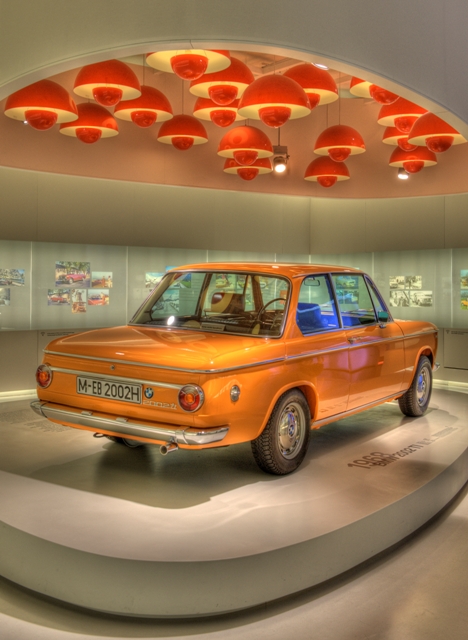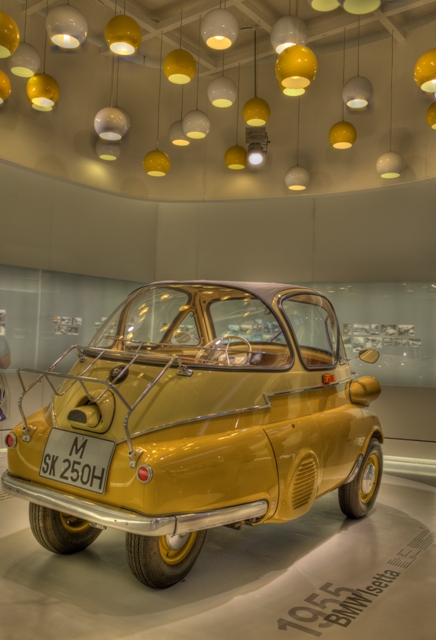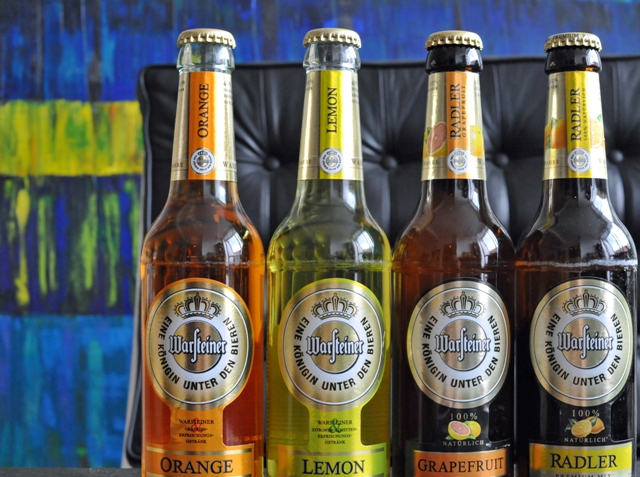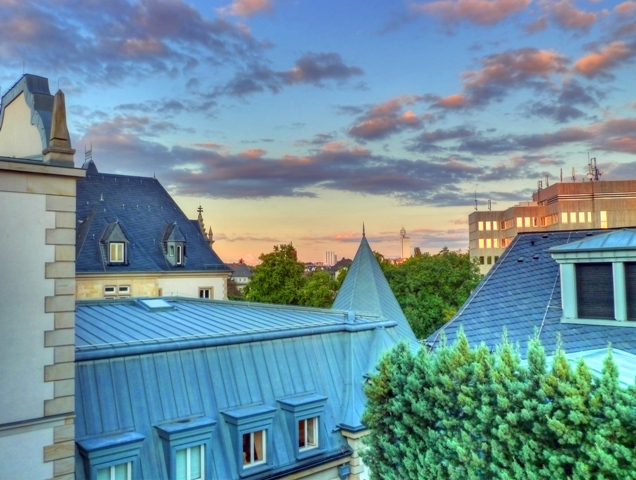Everyone visits the famous English Garden in Munich. It's smaller relative, the Westpark, might be a little further from the city center and less well known, but it has a lot to offer as well.
To get there from downtown, take the U6 subway heading south out of the city and exit at the "Westpark" stop.
It's only about 15 minutes. Here is its location relative to some other Schnitzelbanh photoblog destinations - the English Garden, Nymphenburg Palace, and the Tierpark (zoo):
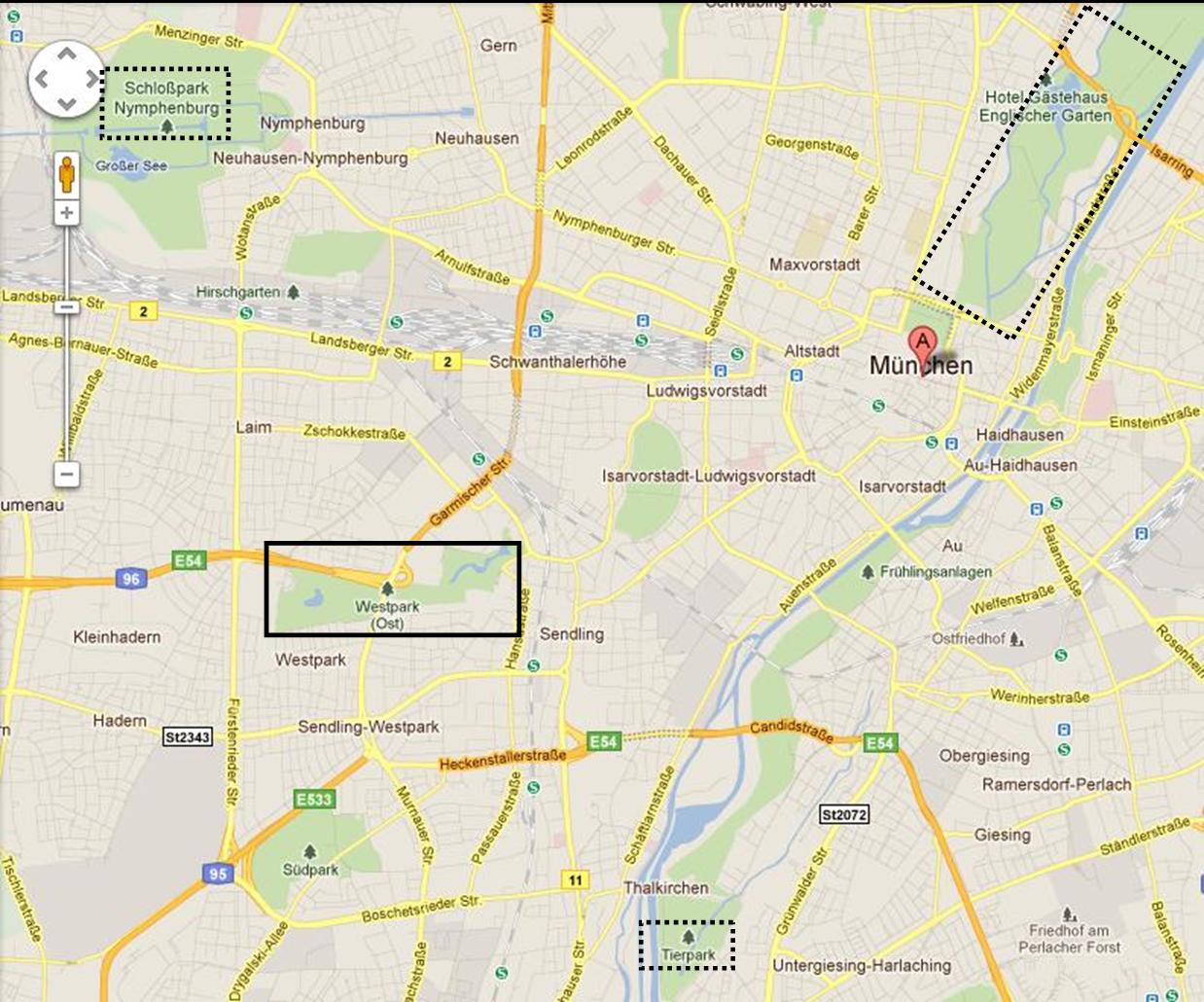
As you might tell from above, the Westpark has two sections - confusingly called the Eastern and Western parts. For this post (more to come) I visited the points in the Western part outlined below: seebühne (lakeside ampitheater), rosengarten (rose garden), spielplatz (playground), and biergarten (needs no translation!):
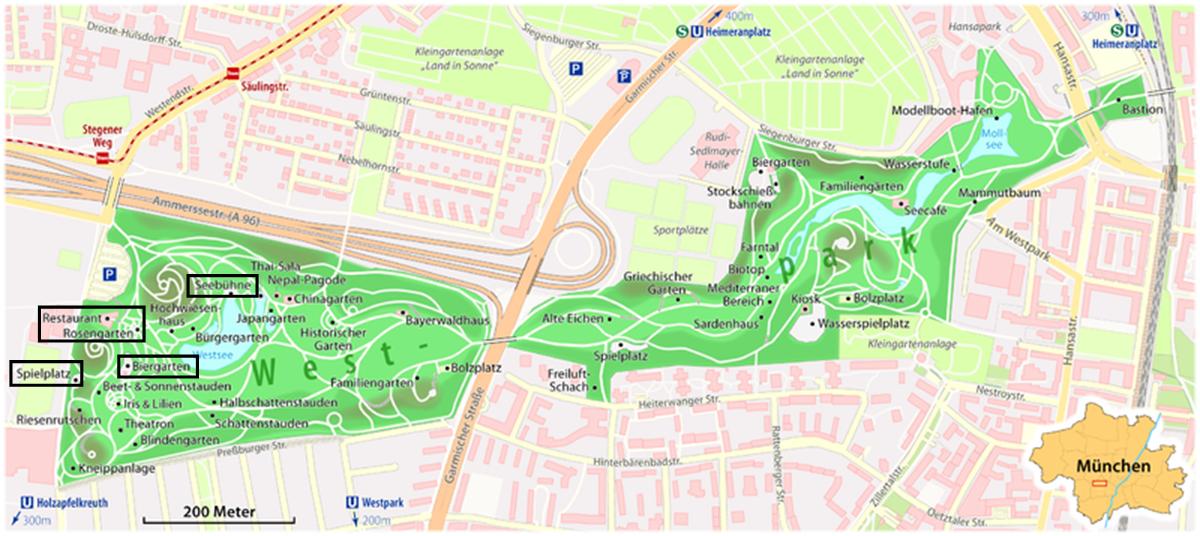 In many ways, the Westpark is typical of German public spaces. Large expanse of open space surrounded by tall trees. In the open people are playing soccer, volleyball, frisbee, or just sunning themselves.
In many ways, the Westpark is typical of German public spaces. Large expanse of open space surrounded by tall trees. In the open people are playing soccer, volleyball, frisbee, or just sunning themselves.
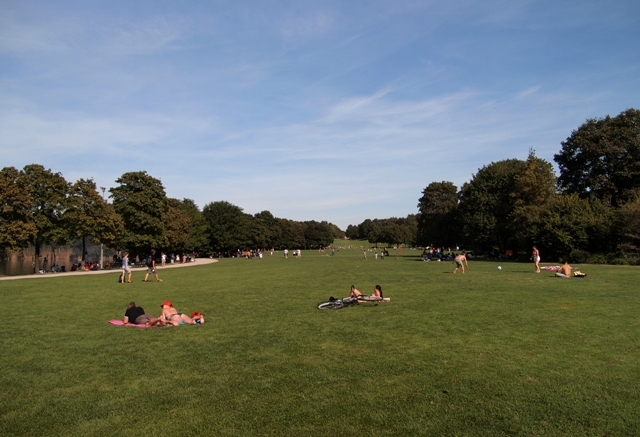
There is a small lake, home to ducks an geese -- no swimming allowed, but creates a nice atmosphere.
One unique aspect of the Westpark is its specifically identified grill zone - even has its own sign (below)! It seemed like everyone brought a small charcoal grill and grabbed a picnic table or spot on the ground. At one point, the air along the entire edge of the lake was white with smoke, and you could smell the food all over the park.
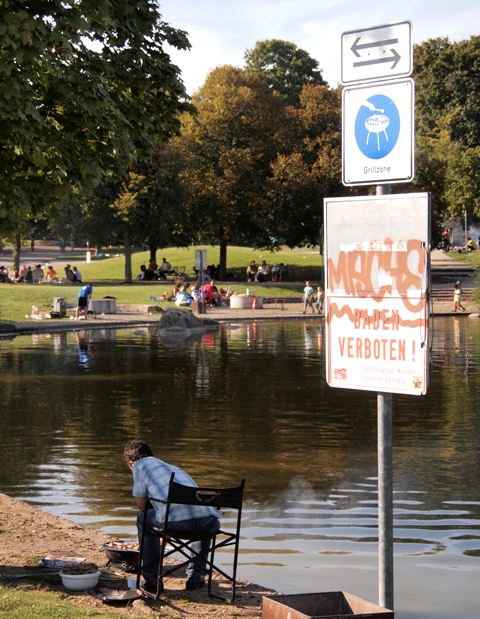
Periodically people try to get the zone removed, but the idea is always defeated.
At one end of the lake is a small stone ampitheater with occasional performances. On this day, a group of people informally were doing traditional dances (I don't know exactly which ethnicity). A few meters out into the water, in front of the theater, is a waterfall created by the artist Alf Lechner:
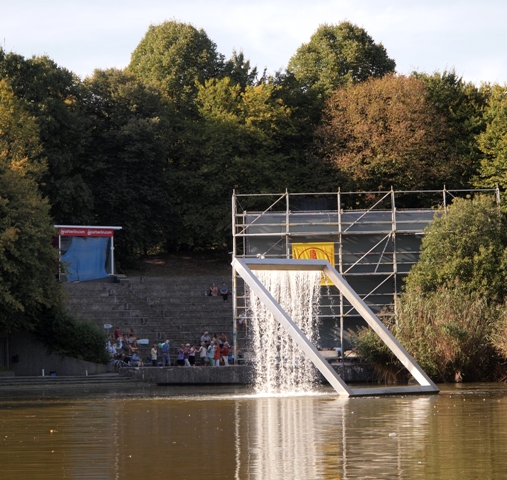
You soon realize that water and art are a common theme throughout the park. Below is the Guten Tag Brunnen ("Good Day Fountain") from artist Makoto Fujiwara. It consists of three large stones where water is pushed through to the top and spills down the sides (surprisingly for Germany, not drinkable).
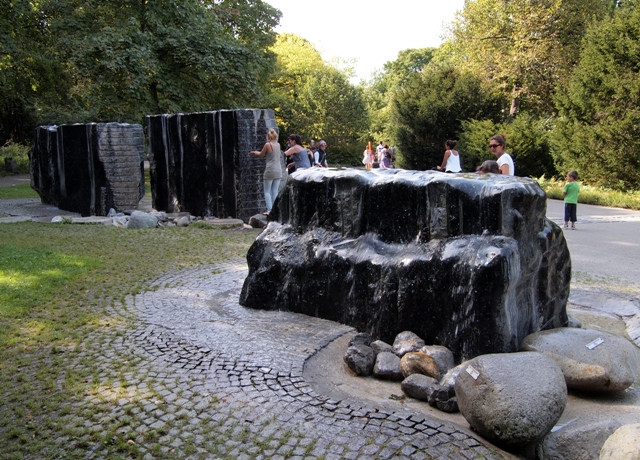
Not far from the ampitheater is a restaurant with a rose garden outside:
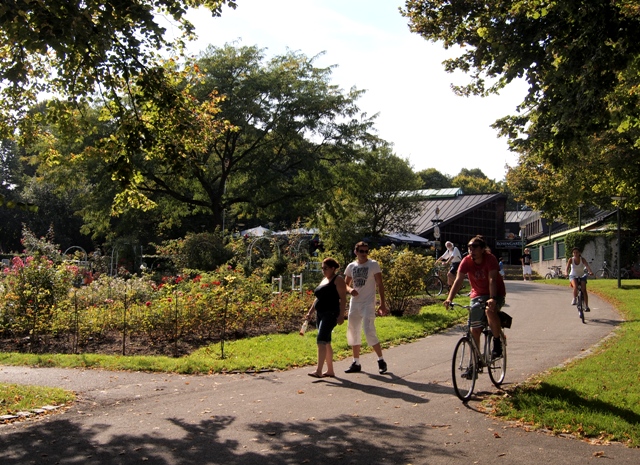
At the edge of the rose garden are small bubbly water fountains that basically become a playground for kids. The weather was hot that Sunday, and these were very popular for kicking, splashing, or just sticking a foot in...
(notice the rows of roses in background):

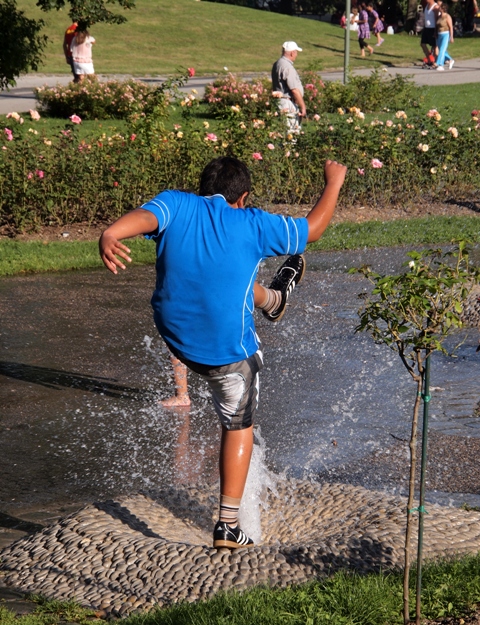
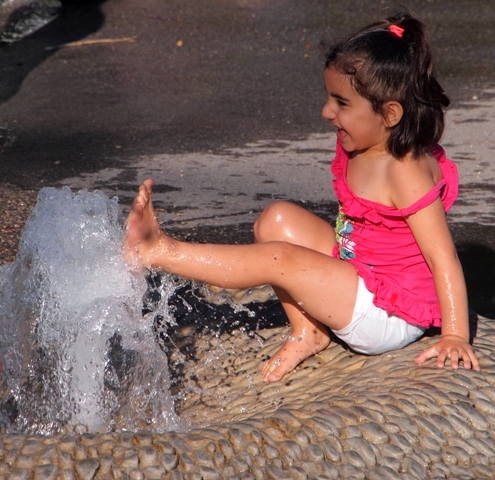
This strange thing was between the rose garden and the water... I forgot to read the plaque (sorry!):
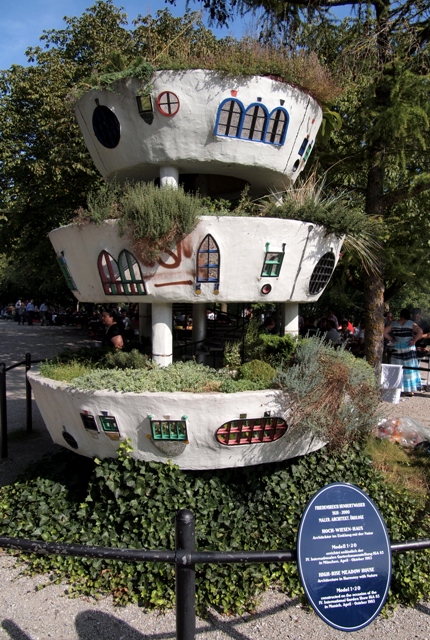
A little further along our walk this day was a small playground with tire swings. I tried to catch the adventurous children (those swinging highest) in the second shot -- look at the delight on the boy's face!
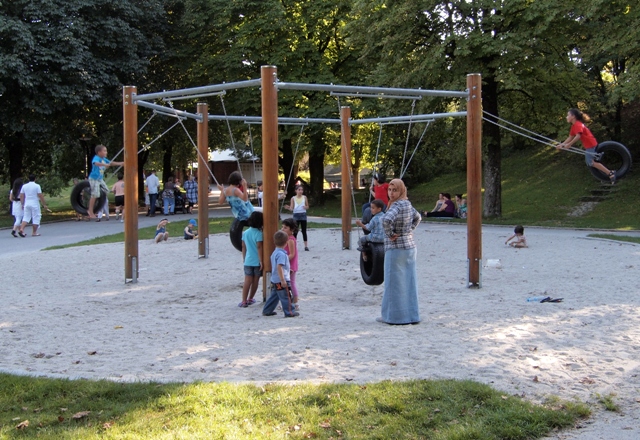
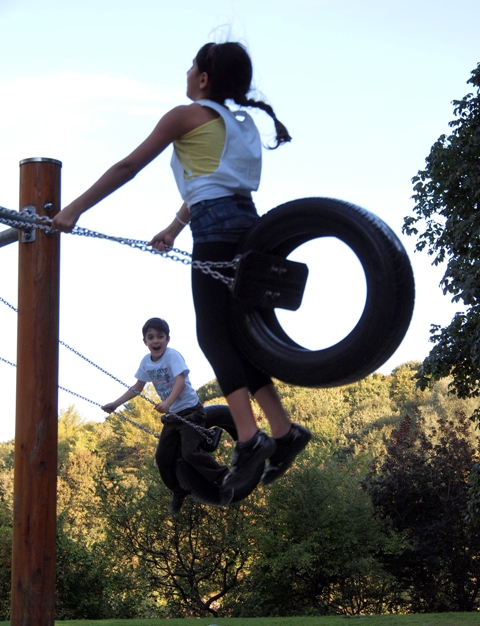
There was another installment of art, called the Terraasse (the terrace) by Jean Clareboudt. Kids of all ages have taken it over now - young ones climbing all around, older ones with graffiti.
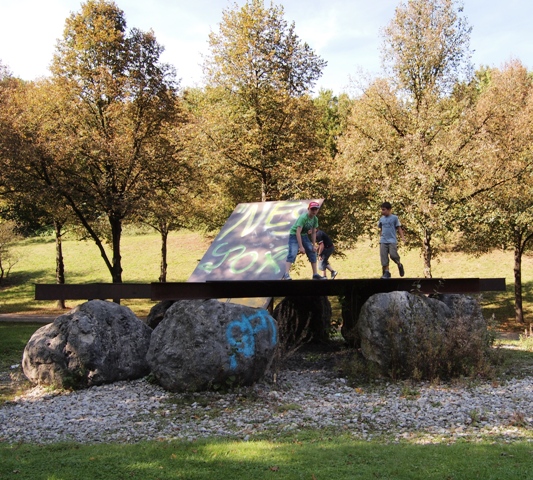
Finally, of course, the biergarten. Small, but nice... with a large cigarette machine for those in need of a drag.
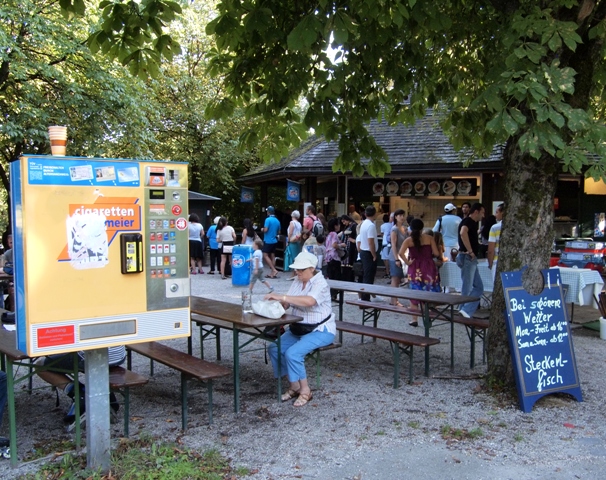
I only walked through the Western part of the park, and will have some more posts with photos including the "East Asian" section (coming soon) -- the park's Eastern part will be another photo trip entirely.
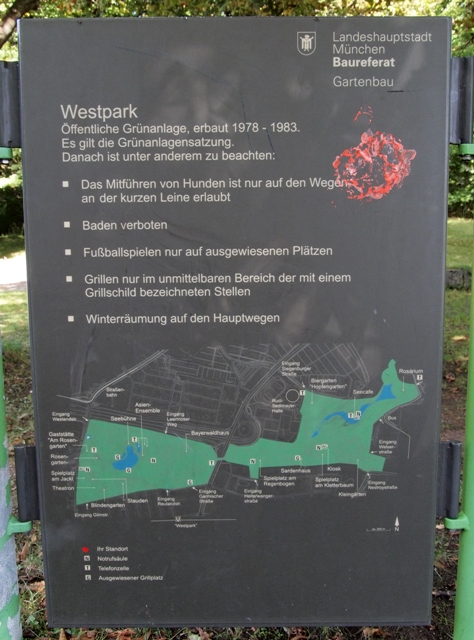
 Friday, September 16, 2011 at 8:00
Friday, September 16, 2011 at 8:00  Herr J ...
Herr J ...  2 Comments
2 Comments 


















